(!) Since support from Microsoft will end on January 14th, 2020, Windows 7 will be excluded from the recommended environment from December 15th, 2019 on this site. Vì lý do Microsoft kết thúc hỗ trợ cho Windows 7 vào ngày 14/01/2020, Windows 7 sẽ là hệ điều hành không được khuyến khích sử dụng với trang web này từ ngày 15/12/2019.
Search by Category / Brand Tìm theo danh mục, nhãn hiệu
Search by Category Tìm theo danh mục
- [Thông báo] Cập nhật địa chỉ kho tập kết hàng hóa tại khu vực miền Nam của MISUMI Việt Nam. Xem chi tiết.
[Announcement] Update on warehouse address in the Southern region of MISUIMI Vietnam. See more. - [Cảnh Báo] Thủ Đoạn Lừa Đảo Từ Nhân Viên Giao Hàng – Yêu Cầu Trả Phí Ship. Xem chi tiết.
[Warning] Fraud Calling from Shipper - Asking to Pay Shipping Fee. See more.
MISUMI Temperature Conditioning Components
Brand |
|
|---|---|
| CAD |
|
| Days to Ship |
|
2 itemsMặt hàng
- Sort By
-
You can add up to 6 items per a category to the compare list.
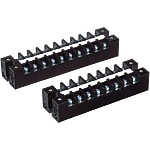

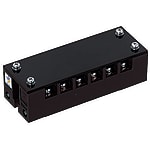
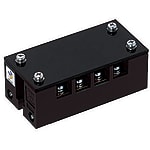
MISUMI
·This is a heat resistant terminal block. Choose from with or without a cover.
- Volume Discount
From: 424,424 VND Days to Ship: Số ngày giao hàng: 4 Day(s) or more  4 Day(s) or more
4 Day(s) or more
-
You can add up to 6 items per a category to the compare list.

Universal Relays - Soldered Terminal
MISUMI
[Features]·This is a solder terminal type universal relay.
- Volume Discount
From: 591,745 VND Days to Ship: Số ngày giao hàng: 4 Day(s) or more  4 Day(s) or more
4 Day(s) or more
| BrandNhãn hiệu |
|---|
| Product SeriesDòng sản phẩm |
| CADCAD |
| From |
| Days to ShipSố ngày giao hàng |
You can add up to 6 items per a category to the compare list. | You can add up to 6 items per a category to the compare list. | |
| BrandNhãn hiệu | MISUMI | MISUMI |
| Product SeriesDòng sản phẩm | ||
| CADCAD |
|
|
| From | 424,424 VND- | 591,745 VND |
| Days to ShipSố ngày giao hàng | 4 Day(s) or more | 4 Day(s) or more |
Loading...Tải…
ConfigureTạo
Related Categories to Temperature Conditioning ComponentsDanh mục liên quan đến Temperature Conditioning Components
FAQ Temperature Conditioning Components
- Question: What are temperature conditioning components?
- Answer: Temperature conditioning components are devices used in industrial settings to control and regulate temperature within a system. These components play a crucial role in maintaining optimal operating conditions for various equipment and processes. Common temperature conditioning components include thermostats, temperature sensors, heaters, coolers, and temperature controllers. They work together to ensure that machinery, processes, or environments remain within specified temperature ranges, preventing overheating or excessive cooling. These components are fundamental in industries like manufacturing, where precise temperature control is essential for product quality and process efficiency. Selecting the right temperature conditioning components is vital for achieving stability and reliability in automated systems, ensuring that equipment operates within safe and effective temperature parameters.
- Question: How do heat-resistant terminal blocks work in temperature control?
- Answer: Heat-resistant terminal blocks facilitate secure electrical connections in environments with high temperatures, commonly encountered in industrial processes. Constructed from materials that withstand elevated temperatures, these terminal blocks ensure stable and reliable electrical performance. By maintaining integrity in extreme heat, they contribute to the effectiveness and safety of temperature control systems, commonly used in industrial applications like furnaces and ovens where elevated temperatures are prevalent.
- Question: What is the purpose of Solid State Relays (SSRs) with heatsinks in temperature control systems?
- Answer: Solid-state relays (SSRs) with heatsinks play a key role in temperature control systems by precisely and reliably switching high-power electrical loads. The heatsink is essential for dissipating the heat generated during the switching process, preventing damage to the SSRs. This combination ensures the longevity and efficiency of the relay. In temperature control applications, SSRs with heatsinks contribute to accurate regulation of heating or cooling elements, enhancing system performance, responsiveness, and overall safety.
- Question: Can thermo-chillers be used for all types of temperature control applications?
- Answer: Thermo-chillers are versatile and can be used in various temperature control applications. They excel in maintaining precise temperature levels, making them suitable for processes like cooling in industrial equipment, medical devices, and scientific instruments. However, their applicability may depend on specific requirements, such as temperature range and cooling capacity, making it important to choose the right chiller for a given application.
- Question: How do converter modules enhance temperature control systems?
- Answer: Converter modules improve temperature control systems by converting and regulating electrical signals. They enable precise control of heating or cooling elements by adjusting power levels efficiently. These modules play a key role in enhancing the overall performance and responsiveness of temperature control systems. Their ability to convert signals ensures compatibility between different devices, facilitating seamless communication and enabling accurate temperature regulation in various applications.
- Question: What should be considered when selecting temperature conditioning components?
- Answer: When choosing temperature conditioning components, consider the required temperature range, precision, and compatibility with your application. Prioritize energy efficiency, reliability, and ease of installation and maintenance. Ensure components meet industry standards and regulations. Balance initial costs with long-term benefits, and assess scalability for potential system expansions. Choose components that align with your specific temperature control needs and application requirements.
- Question: Are there communication-enabled temperature control components?
- Answer: Communication-enabled temperature control components are advanced devices with built-in sensors and digital interfaces, allowing them to measure and regulate temperature. These components can communicate with other devices or central control systems using protocols like Modbus or Ethernet, enabling real-time monitoring and centralized control in applications like industrial automation and HVAC systems (Heating, ventilation, and air conditioning).
- Question: How do heat-resistant terminal blocks impact the stability of temperature control systems?
- Answer: Heat-resistant terminal blocks impact the stability of temperature control systems through their robust construction and capability to withstand high temperatures. These terminal blocks are typically made from materials with excellent heat resistance properties, ensuring they remain stable and functional in challenging thermal conditions. By providing a secure electrical connection even in elevated temperatures, heat-resistant terminal blocks prevent electrical failures, interruptions, or degradation, thus contributing to the overall stability and reliability of temperature control systems. This stability is crucial for maintaining precise and effective temperature regulation in various industrial and commercial applications.
- Question: What are the advantages of using SSRs over traditional relays in temperature control?
- Answer: Solid State Relays (SSRs) offer notable advantages in temperature control compared to traditional relays. With faster response times, longer lifespans due to no moving parts, reduced noise, and precise control over power, SSRs improve temperature regulation. They are compact, energy-efficient, and reliable. These factors collectively make SSRs a preferred choice for applications demanding accurate, efficient, and durable temperature control.
- Question: Can thermo-chillers be integrated into existing temperature control systems?
- Answer: Thermo-chillers can be effectively integrated into existing temperature control systems with careful planning. Compatibility checks, sizing assessments, and configuration of control interfaces are essential steps. Successful integration enhances the overall system's temperature regulation capabilities, allowing thermo-chillers to actively manage and control thermal conditions within the existing setup for improved efficiency and precision in temperature control across various applications.



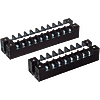
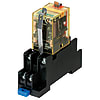



How can we improve?
How can we improve?
While we are not able to respond directly to comments submitted in this form, the information will be reviewed for future improvement.
Customer Privacy Policy
Thank you for your cooperation.
While we are not able to respond directly to comments submitted in this form, the information will be reviewed for future improvement.
Please use the inquiry form.
Customer Privacy Policy